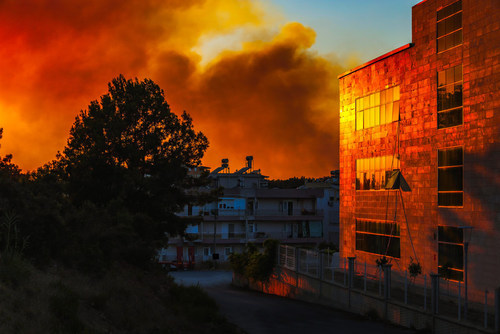
Fire protection coatings market booms as regulations rise
by CM Staff
The market is estimated to garner $2.74 billion in revenue by 2027 from $1.94 billion in 2020.

Frost & Sullivan – Global Fire Protection Coatings Growth Opportunities
SAN ANTONIO— Frost & Sullivan’s recent analysis, Global Fire Protection Coatings Growth Opportunities, finds that a rise in the stringency of regulations and safety advisory to augment the fire safety of buildings and constructions across sectors—oil and gas, petrochemicals, chemicals, and allied industries—is expediting the demand for fire protection coatings globally.
The market is estimated to garner $2.74 billion in revenue by 2027 from $1.94 billion in 2020, an uptick at a compound annual growth rate of 5.1 per cent. Hydrocarbon cementitious and hydrocarbon intumescent are the main product types driving the overall market, followed by cellulosic intumescent and cellulosic cementitious.
Awareness of the benefits of deploying fire safety measurements that protect lives and property is increasing in economies like China, India, and Southeast Asia. As a result, the fire protection coatings market will witness the highest growth in Asia-Pacific.
With faster development of the commercial and industrial sectors in Eastern Europe and the surging demand for both coatings—hydrocarbon and cellulosic—due to many offshore installations in Western Europe, Europe will be the second-largest market, followed by the Americas and the Middle East, Africa, and South Asia.
“Fire protection coatings manufacturers are increasingly witnessing demand from key stakeholders of buildings and structures exposed to hydrocarbon and cellulosic fire types for more durable and faster-drying products,” said Ganesh Jayant Dabholkar, Chemicals, Materials and Nutrition Research Analyst at Frost & Sullivan in a press release.
“The rising demand for intumescent and cementitious coatings that form thinner layers, dry faster, and are easier to apply will drive innovation. Further, hybrid, solvent-borne intumescent coatings are increasingly penetrating the cellulosic fire protection market,” Dabholkar added.
Increasingly stringent fire standards and environmental sustainability regulations will influence new product development, presenting lucrative growth prospects for market participants. According to research from Frost & Sullivan, the following are some of the areas that should be considered for continued growth.
Products with greater durability and curing speeds
Manufacturers should develop coatings that eliminate the need for surface treatment, priming, or the application of topcoats, which will aid end users in optimizing project costs and reducing application times.
Development of products for wooden substrates
Manufacturers of cellulosic intumescent coatings should leverage the emerging need of end users who use wooden structural components in commercial and residential spaces.
Hybrid cellulosic intumescent coatings
Market participants should invest in research and development (R&D) and commercialization of hybrid cellulosic intumescent coatings to attain greater market penetration.